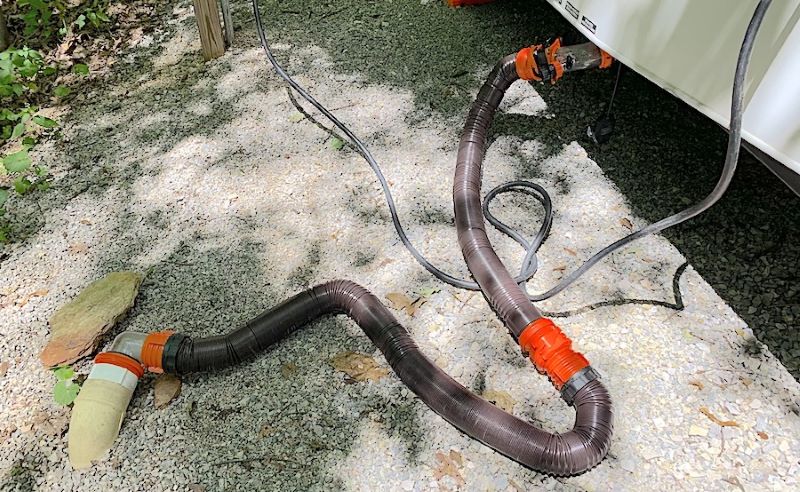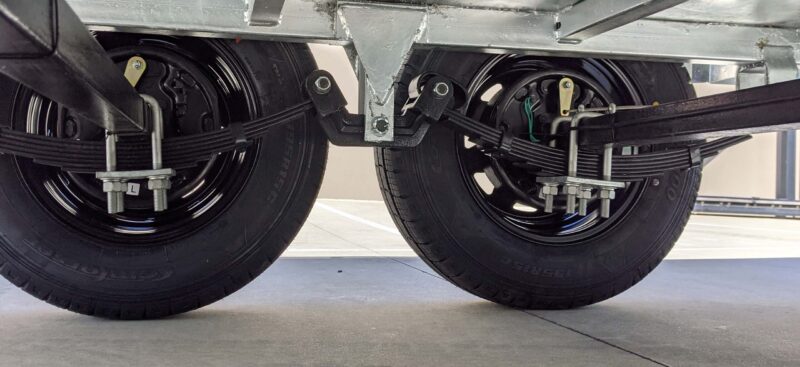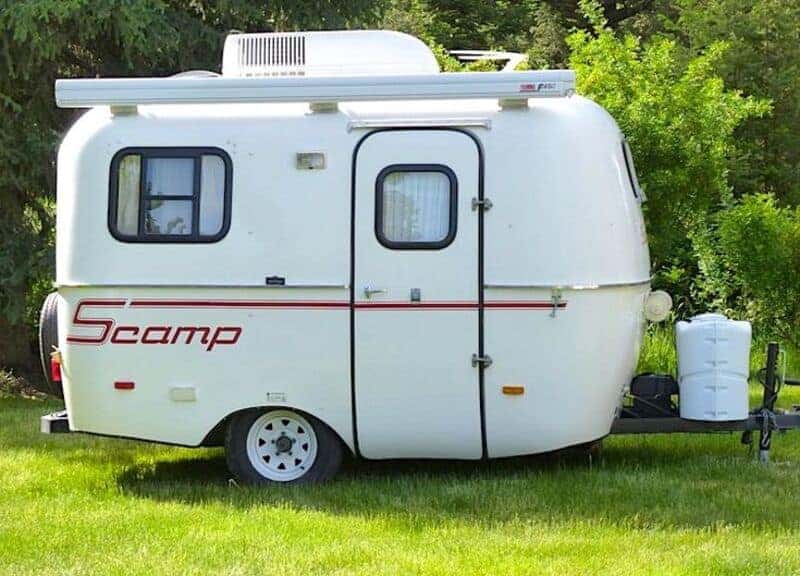While the RV sewer donut is not the most palatable topic to discuss in RV circles, it’s a necessary one. Otherwise known as a sewer collar or a sewer circle, it’s one of those “need-to-have” tools in your RV kit.
Sewer donuts may be simplistic, rudimentary devices, but they’re still very necessary since many campgrounds lack a threaded sewer connection. Without those threads, you need something that’ll create an effective seal.
In this article, we’ll get down and dirty with the RV sewer donut, explaining what it is, what a sewer donut looks like, why you need it, where you can get one, and its specific uses.
What is a Sewer Donut for an RV?
An RV sewer donut, collar, or circle is about as simple a device as possible. It’s made out of thick rubber, cylindrical, with one end tapered down to fit in the ground sewer connection. The top end is wider, so it’ll fit around your RV sewer pipe waste line elbow piece that fits into the ground sewer opening.
It’s a simple enough design that works very well, creating the necessary seal to avoid leaks and all of those wonderful smells. RV sewer donuts are small and easy to store away. They also weigh next to nothing.
Campgrounds require a seal, and some states, like the state of Florida, require the use of sewer donuts under the law.
How Does an RV Sewer Donut Work?
An RV sewer donut works by placing the tapered end into the ground pipe for the campground sewer hole. Then, the connector on your waste line goes into the top, non-tapered end of the sewer donut.
The rubber on a donut is soft enough that it creates a seal against the walls of the connector and the interior of the ground pipe. With that seal in place, fumes, and sewage can’t escape throughout the dumping process. It also keeps your sewer hose in place, so it won’t disconnect easily.
What Does a Sewer Donut Look Like?
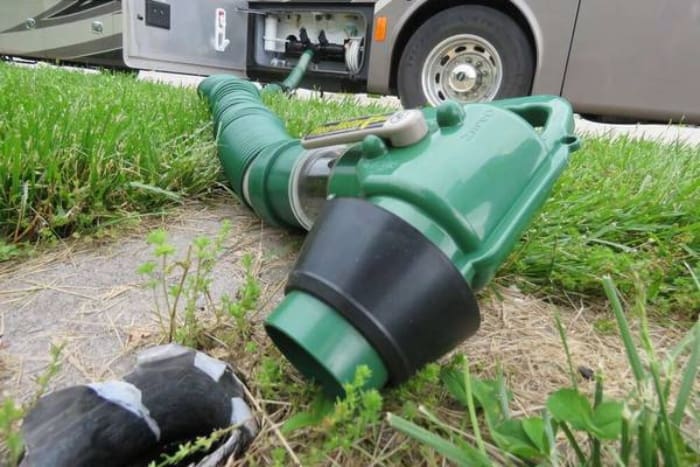
A sewer donut looks like a thick, cylindrical rubber piece. For instance, imagine you have a small oil funnel in your hand. Measure down from the wide top, about 2”, and cut the rest off.
What you have left highly resembles a sewer donut. All you have to do is seriously thicken the walls and trade out the plastic for rubber. These aren’t complicated devices. They have a very specific use and are designed for that use—nothing more.
3 Best RV Sewer Donuts
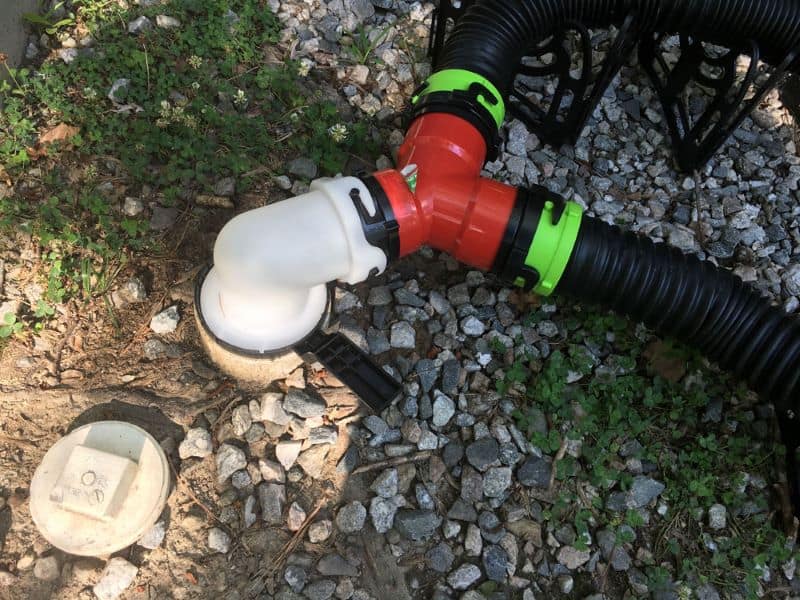
There are many different RV sewer donuts to choose from, and you can pick one up just about anywhere. However, that doesn’t mean it’ll be an effective tool in the long run. That’s right; manufacturers can cut costs on even a sewer donut and present consumers with something cheap. Your best bet is to purchase a good one that will last as long as you have your RV.
1. Camco Flexible 3-in-1 Sewer Adapter Hose Seal
While it may look a little different from your traditional RV sewer donut, Camco’s sewer adapter hose seal is every bit as effective. It’s compatible with just about any sewer inlet (most of which are 4” in diameter), fitting 3” to 4” inlets.
The hose seal features a number of ridges that run down the tapered end. These ridges let you press the hose seal into the ground pipe without the need to twist it clockwise like you would screw something in. Of course, purchasing this particular hole seal is purely for non-threaded campground sewer inlets.
2. Lippert RV Waste Master System Donut Seal
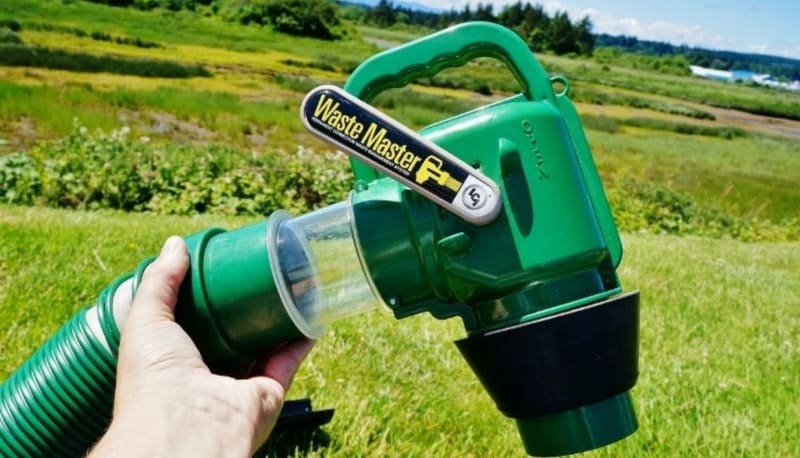
Lippert’s donut seal is more like the traditional donut seal most RVers are familiar with. It doesn’t feature any ridges, and it doesn’t come with some newfangled connecting options to make it better than it already is. This Lippert RV sewer donut doesn’t need all of that.
It does what it’s designed to do, and it does it well. The Lippert RV Waste Master System Donut Seal is designed with a hardened, exterior barrier and a smooth inner lining. The smoothness is to help your RV sewer hose connection point and the ground sewer pipe connect up without a problem.
The hardened exterior is necessary. Cheaply made, soft donut seals don’t stand up to the elements as well, eventually drying and cracking in places. The last thing anyone wants is a cracked rubber donut seal.
This RV sewer donut can also be purchased with Lippert’s all-in-one Waste Master RV system. If you need to replace your sewer hose, or are purchasing one for the first time and don’t know what you need, Lippert’s system comes with everything you need in one box. That also includes the RV sewer donut.
Lippert is a trusted name with RVers. They manufacture a ton of products that make RVers’ lives better and more convenient, along with providing quality products for the marine, automotive, towing, and utility industries.
3. Duraflex Soft Rubber Sewer Ring
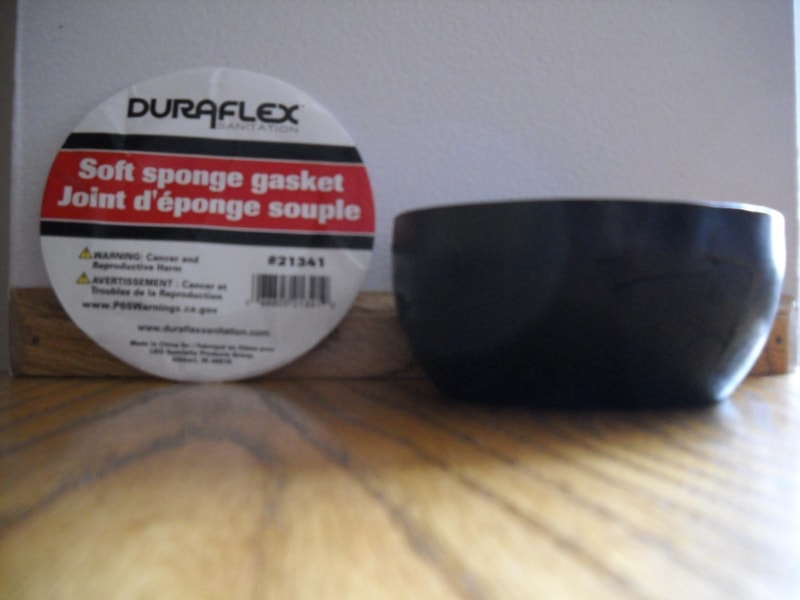
This is about as standard as you can get, however, don’t mistake “standard” for cheap and ineffective. Duraflex is a known brand, and their soft rubber sewer ring is constructed to last.
Another good thing about Duraflex is they make a bunch of various components that work with the soft rubber sewer ring. So, you can get everything you need, in addition to the sewer ring, and know that what you’re getting is compatible.
The product is simple, durable, and works with most of the components that come with RVs, along with the campground sewer pipe. Keeping your sewer system secure and clean is important, to you and the individuals who happen to be camping near and around your site.
Duraflex supplies the components and the peace of mind that its product will do the trick. As a standard soft rubber ring, the Duraflex is compatible with plenty of non-Duraflex components as well.
Is the Footloose Sewer Cap RV Dump Station Lid a Good Substitute?
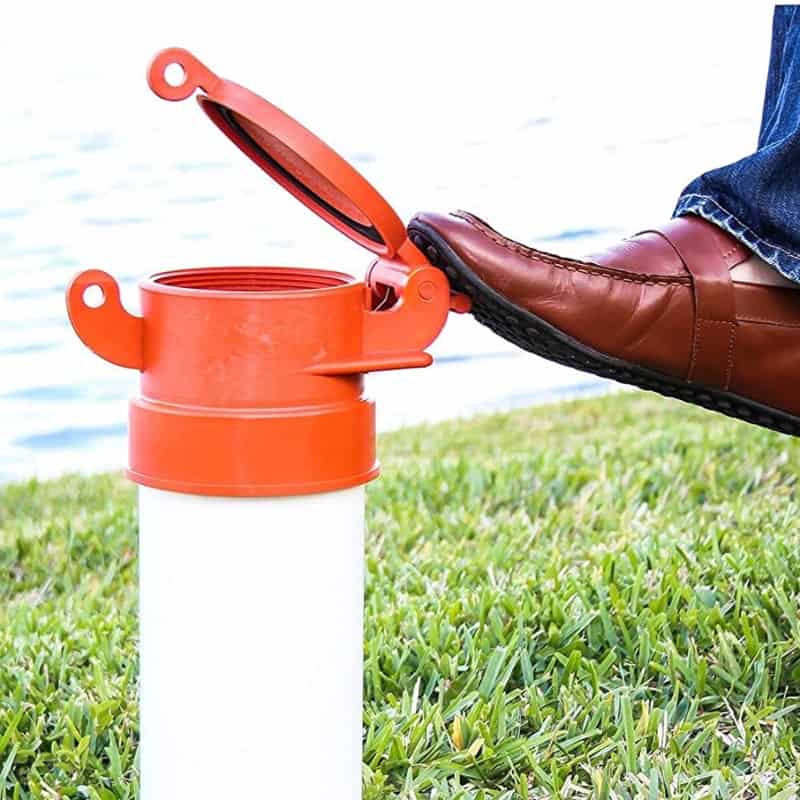
The Footloose Sewer Cap RV Dump Station Lid isn’t necessarily a good substitute because you can’t use it all of the time. The Footloose Sewer Cap is a fantastic device for quickly hooking up to your onsite sewage hookup. However, it’s not the end-all-be-all. It still requires a sewer donut. A Footloose Sewer Cap features several design aspects.
It either mounts on the outside of the campsite sewer pipe, or the optional, threaded fitting (male end) will fit on a threaded female pipe at the campground (assuming they have threaded pipes). Once it’s screwed on, the cap closes over it when not in use.
Since the Dump Station Lid is 4” in diameter, you will still need to pop a sewer donut in there before tying in your RV waste line. Depending on where you’re at, the campsite pipe may not be situated where the Dump Station Lid can easily mount with a good seal, so there are times when it won’t be enough.
It does feature a nice little foot pedal. Simply step on it (like a foot pedal that raises a garbage can lid), and the flap opens. With your foot on the foot pedal, you have both hands free to hook up everything else.
Pros
- Easy to install and remove
- Foot pedal for easy opening and closing
- Still works perfectly fine with a sewer donut
- Locking capability
- Long-lasting polypropylene design
Cons
- Isn’t the ultimate solution
- Still requires a sewer donut
- More expensive than just going with a donut
4 FAQs About RV Sewer Donut
1. Are there sewer donuts with caps?
Yes, but the caps are a separate component, even if the component is built into the sewer donut. The rubber part of the sewer donut is the part that creates the necessary seal, while the clamps hold everything in place and tighten the seal as well.
2. What size is an RV sewer connection?
RV sewer hoses (the part running from your tank to the sewer hole) are 3” in diameter. Campsite hookups are generally 4” in diameter. However, you may run across a 3 and ½” variation or a 3”.
3. Is there a difference between a sewer hose adapter and a sewer hose donut?
Yes, the adapter is typically an elbow piece or the aforementioned, Rhino Sewer Hose Adapter Seal. It’s designed for quickly attaching your waste line to the camp site’s sewer inlet but only after the sewer donut is secured to the adapter and the tapered end into the sewer inlet.
4. Can you leave the sewer open on an RV?
You should never leave the sewer open because your tank won’t drain properly. The weight of accumulation is the driving force that pushes your waste down the hose and into the sewer inlet. Without that weight, it won’t flow out properly, potentially creating blockages down the road.
Final Thoughts on RV Sewer Donuts
An RV sewer donut is one of the simplest yet most important products you can have as an RVer. For one, it’s a necessary component in many campgrounds. Second, depending on what state you’re in, it’s against the law not to use one.
Fortunately, it’s one of the few necessities that doesn’t cost an arm and a leg. You’re free to pick up as many waste facilitation components as you have a mind to. Just don’t neglect the good old, reliable sewer donut, and it won’t let you down.
Related Reading:
1. 11 Proven Ways to Eliminate RV Toilet Smells
2. 8 Best Travel Trailers Without Bathrooms
3. 17 Essential RV Spare Parts to Carry
About the Author:
Thomas Godwin is a full-time freelance writer with a BFA in Creative Writing, a U.S. Marine, and an avid outdoorsman.
When he’s not writing, he’s raising chickens and Appleyard ducks. Thomas also constructs teardrop campers (attempting to anyway) and kayaks the Blackwater River with his wife, two daughters, and his Dobermans.


